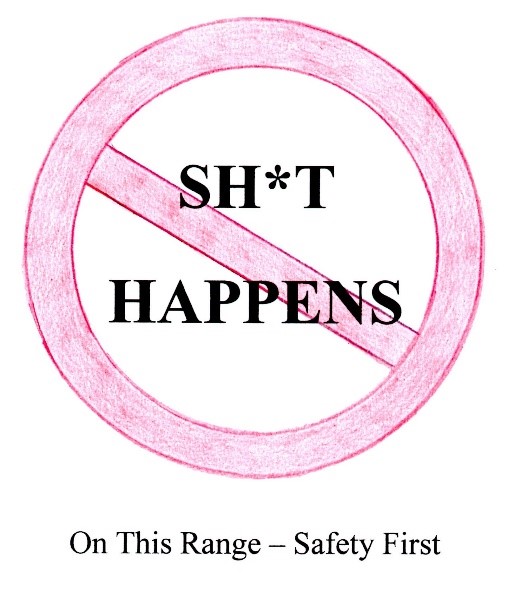
FIREARMS RANGE AND GUN ROOM SAFETY
Chuck Klein, Copyrignt 2021
Prevalent to most urban and suburban shooters is the indoor range where divided spaces, acoustics and the ubiquitous tramway system of setting and retrieving targets is provided. The motorized paper-target mover completely eliminates the reason for anyone to be down range. Outdoor shooting facilities, however, usually require physically walking to and from the target stand to place/replace targets, be they paper, bowling pins, tin-cans or anything that’s fun, challenging and safe to test your skill on. Individual stalls are usually not available making safety issues more challenging.
On the premise that “Sh*t Happens,” extra precautions must be in place for less-confined outdoor ranges where movement of persons, changing of targets and usage of various types of firearms and targets will be taking place. On personal ranges, rules don’t have to be oppressive, but they must be enforced and comprehended by all participants. Safety at the firing range must be set and controlled by the range operator. On my farm’s range I’ve enjoyed years of entertaining guests; shooting at bottles, aerial targets and hip-shooting rapid-fire guns at ground objects as they bounce and sail from hits. Of course, we’ve done a lot of serious combat-style shooting including draw-and-fire and other tactics usually forbidden at indoor facilities. I’ve also trained many juveniles in their first introduction to the unique experience of shooting.
Every time I open a shooting session, whether it’s with first-timers or even my adult children (now in their 50s), I read the rules which are kept front and center on top of the targets which are in a weather-proof container. There are no exceptions to these must-be adhered-to rules: •
* Do NOT Handle Firearms When Anyone Is Down Range.
* Except While Engaged In The Act Of Shooting ALL Firearms – That Are Not In A Holster Or Rack – Must Be Facing Down Range AND With the Action Open.
* Anyone Leaving The Shooting Shack MUST Announce Their Intentions AND be sure ALL Occupants Are Aware Of Their Actions.
* ALL Shooters And Spectators MUST Wear Hearing and Eye Protection while ANY Shooting is Commencing. One final range rule:
If I’m not going to be attending the shooting activities, I appoint another adult to be the range officer and read the rules before any shooting begins. I choose someone who I know is familiar with shooting and has shot at my range on previous occasions.
As an NRA Certified Instructor, I’ve introduced all 10 of my grandchildren to shooting. Those who demonstrated an interest are awarded Junior Division metals of Pro-Marksman through Sharpshooter and up to Bar 9 as allowed by the NRA. The following rules are the first indoctrination they receive while in the gunroom:
1) Assume all guns are loaded.
2) Never handle a firearm unless you know how to check if it is loaded. (I then demonstrate how to check certain firearms emphasizing that not all guns operate the same.)
3) Always ask permission of the owner of a gun before touching it.
4) Immediately after picking up a firearm – and while keeping it pointed in a safe direction – check to verify if it is loaded or unloaded.
5) Keep your finger off the trigger until you are about to commence firing. (I try to convince them no firearm can be fired without a finger touching the trigger.)
I always make sure everyone understands that horseplay or unsafe gun handling is not acceptable. This visual reminder is posted in the gunroom as well as in the shooting-shack at the range.
Please feel free to print-out and post the NO Sh*t Happens sign in any range and gun store you operate and/or tender copies to ranges and gun stores frequented by you. Gun safety benefits everyone.
Chuck Klein is a NRA Certified Firearms Instructor in 5-disciplines, and active member of IALEFI, author of INSTINCT COMBAT SHOOTING, Defensive Handgunning for Police, 4th Editon and many other books, articles and columns. Contact info and details: Chuck Klein